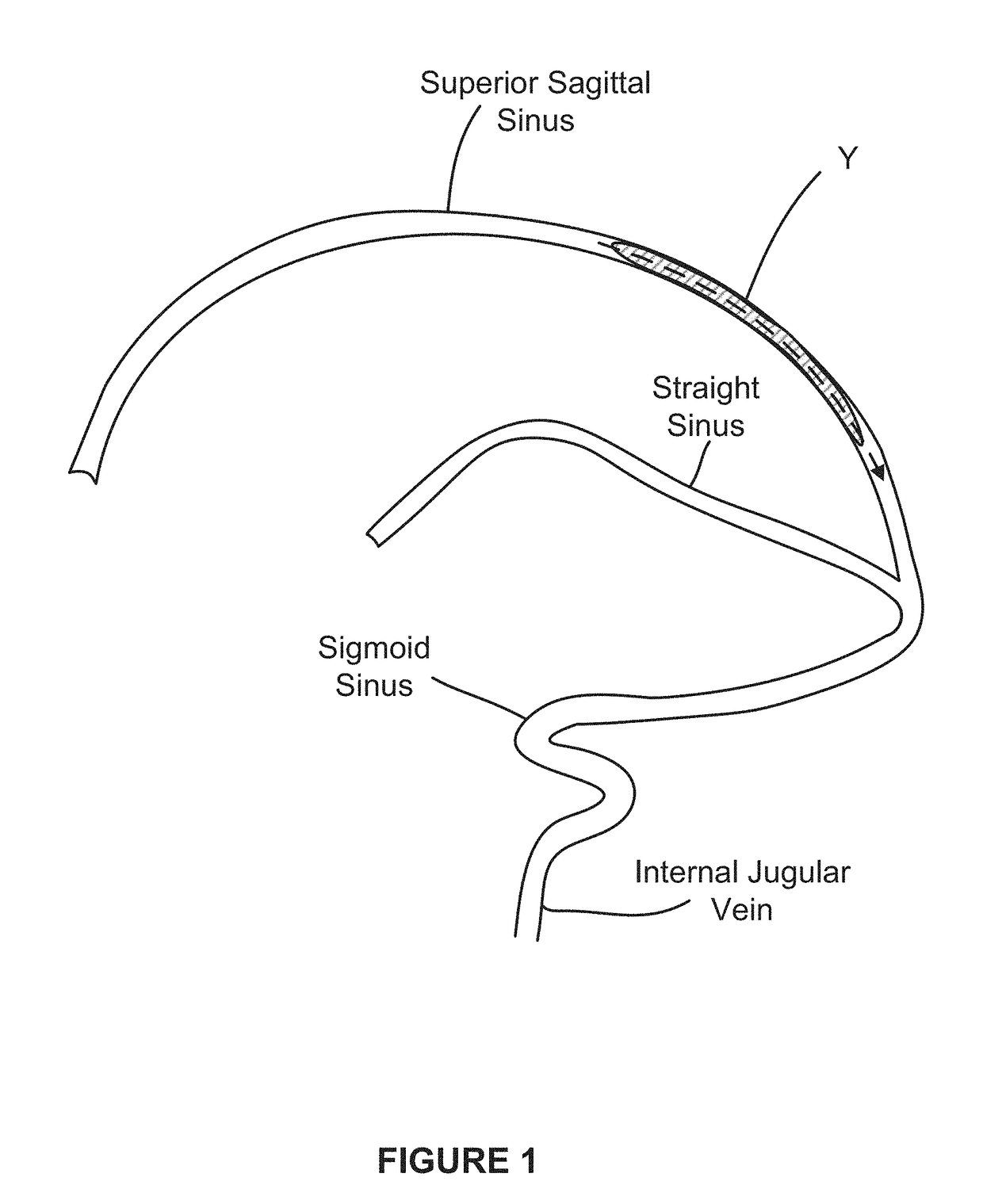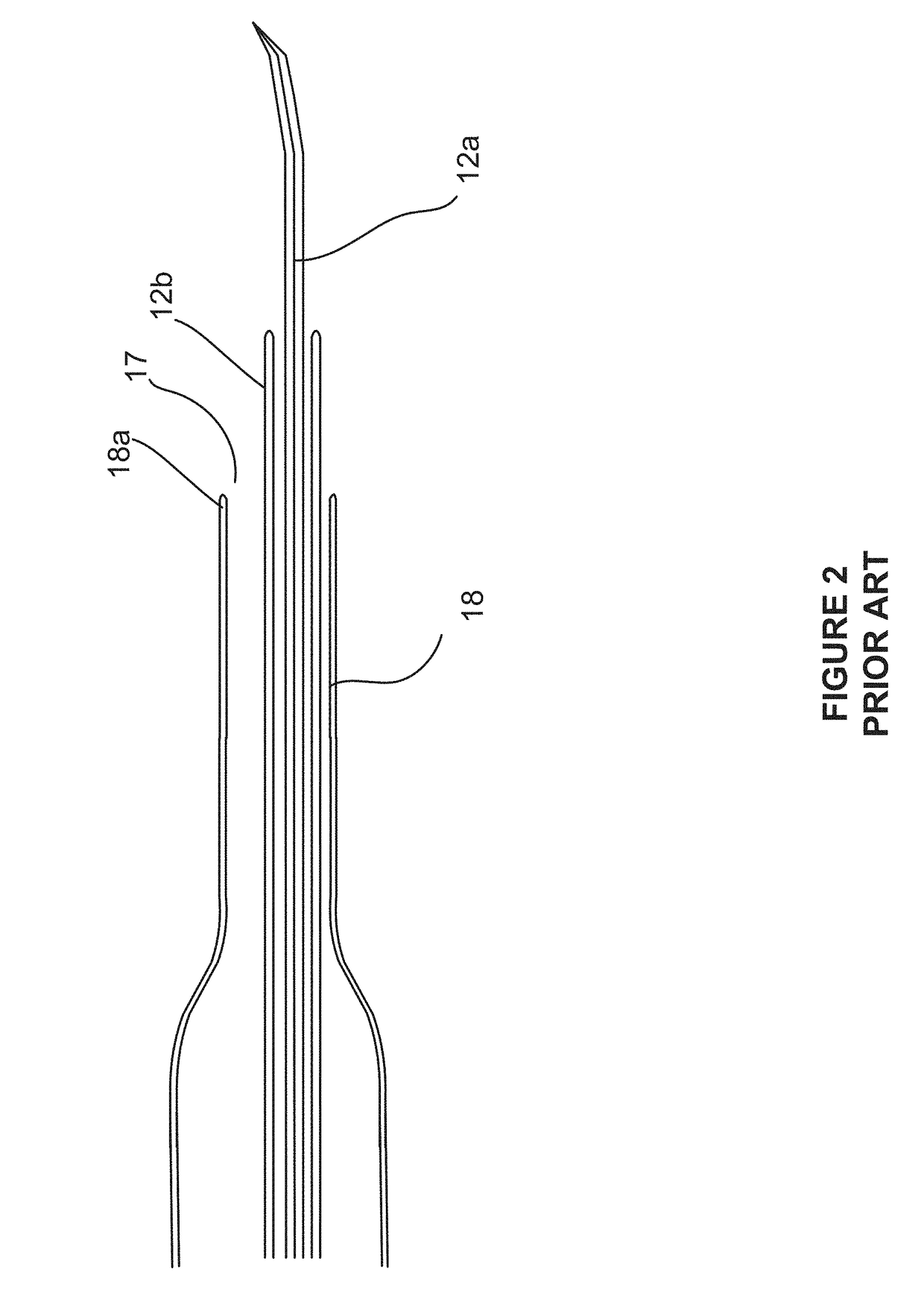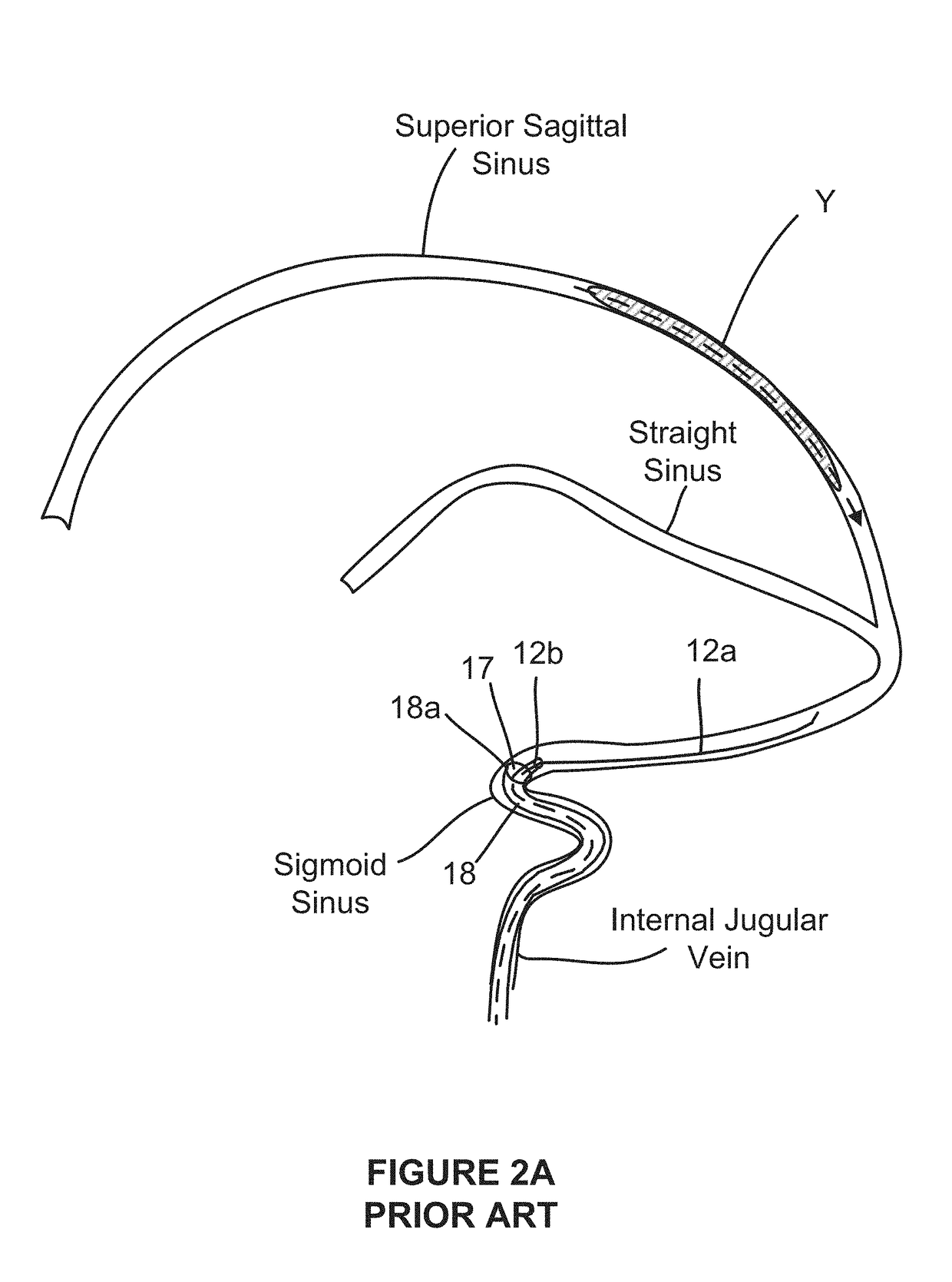System and methods for accessing and treating cerebral venous sinus thrombosis
a technology treatment method, which is applied in the field of intracranial venous vessel access and treatment of cerebral venous sinus, can solve the problems of edema and haemorrhage, difficulty in treatment, and subsequent cerebral swelling
- Summary
- Abstract
- Description
- Claims
- Application Information
AI Technical Summary
Benefits of technology
Problems solved by technology
Method used
Image
Examples
Embodiment Construction
[0033]With reference to the figures, systems and methods for accessing cerebral venous thrombi are described.
Overview
[0034]Cerebral Venous Thrombosis (CVT) is a rarer form of stroke occurring in the venous system. As shown schematically in FIG. 1, clots Y forming in the cerebral venous system (e.g. Superior Sagittal Sinus) can be manifested as a narrowing of the venous vessels to restrict blood flowing from the brain (dotted line). These clots may be both larger in diameter / length and volume as compared to cerebral clots. During recanalization, navigation of catheter systems to the superior sagittal sinus and / or transverse sinus and / or straight sinus (common sites of dural sinus thrombosis) generally progresses from the internal jugular vein, through the sigmoid sinus and into the superior sagittal sinus. In particular, navigation from the internal jugular vein to the sigmoid sinus can be difficult due to the tortuosity and pliancy of the vessels.
[0035]Moreover, the relative size of...
PUM
 Login to View More
Login to View More Abstract
Description
Claims
Application Information
 Login to View More
Login to View More - R&D
- Intellectual Property
- Life Sciences
- Materials
- Tech Scout
- Unparalleled Data Quality
- Higher Quality Content
- 60% Fewer Hallucinations
Browse by: Latest US Patents, China's latest patents, Technical Efficacy Thesaurus, Application Domain, Technology Topic, Popular Technical Reports.
© 2025 PatSnap. All rights reserved.Legal|Privacy policy|Modern Slavery Act Transparency Statement|Sitemap|About US| Contact US: help@patsnap.com



